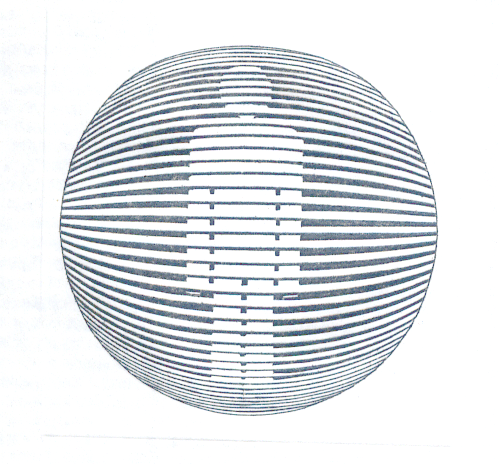w ho/unaids information update: ============================= consultation on re-use of the female condom =========================
W
HO/UNAIDS Information Update:
=============================
Consultation on Re-use of the Female Condom
===========================================
Background
The burden of sexually transmitted infections, including infection
with the Human Immunodeficiency Virus (HIV), the cause of the Acquired
Immunodeficiency Syndrome (AIDS), continues to increase worldwide. Use
of barrier methods, most notably consistent and correct use of the
male latex condom, is advocated as a primary means of interrupting the
spread of sexually transmitted infections, including HIV/AIDS. Because
of the difficulties many women face negotiating the use of male
condoms, the female condom is an important option to assist women in
protecting themselves and their partners from both unwanted pregnancy
and sexually transmitted infections.
The only female condom currently available is a strong, soft,
transparent polyurethane sheath inserted in the vagina before sexual
intercourse. This device has been approved and marketed for single-use
only.
Re-use of the device by women who are unable to access a new female
condom has been reported in a number of countries. WHO and UNAIDS have
been requested to advise countries, programme managers and individuals
who are using this female condom on the safety of re-use practices.
Consultation on Re-use of the Female Condom
WHO and UNAIDS convened a consultation on the safety and feasibility
of re-use of the female condom which was held in Geneva on 5-7 June
2000. The consultation brought together experts in microbiology,
sexually transmitted infections, condom production and quality
assurance testing, and programmatic issues. The primary objective of
this meeting was to evaluate data relevant to the safety and
feasibility of re-use of the female condom, considering both the
structural integrity (i.e., the ability of the condom to withstand
washing and re-use without breaking or developing holes) and the
potential risks of infection related to re-use. Participants were also
asked to consider what policy recommendations and programme guidance,
if any, could be made at present.
The consultation recognized the urgent need for risk-reduction
strategies for women with limited resources who may be at risk for
sexually transmitted infections including HIV. While use of a new male
or female condom is a key prevention strategy, it is recognised that
situations may exist when individuals are unable to use a new condom.
The alternative to re-use for some may be unprotected intercourse.
Re-use of the female condom is likely to occur in situations where
women and men may be at high risk of sexually transmitted infections,
and thus women or their partners could be at risk for exposure to
pathogens from prior acts of intercourse, either during washing or
subsequent re-use of the female condom.
Available Evidence and Unresolved Questions
The consultation reviewed relevant data, including the two sets of
studies which have been conducted to date on re-use of the female
condom. These studies investigated the structural integrity and
microbial retention of female condoms which had been used, washed with
soap and water and, in one study, re-used.
There is currently insufficient evidence available to determine
whether a broad range of sexually transmitted pathogens, including
HIV, can be inactivated and safely removed with a soap and water wash
alone. Experts in microbiology were of the opinion that washing with
soap and water alone could present potential risks to women during
washing and/or to them or their partner during subsequent use.
While disinfection of the female condom has not been studied, it was
agreed that standard disinfection procedures (e.g., soaking in a
bleach solution), followed by washing with soap and water and drying,
would be likely to inactivate and remove sexually transmitted
pathogens from the device. However, concerns remain that disinfecting
condoms may adversely affect their structural integrity.
The available evidence suggests that the structural integrity of the
female condom can withstand several washes in soap and water, drying,
relubrication and re-use. However, the studies also suggest that such
condoms may be more likely to have holes than new condoms.
Normal vaginal flora provide important natural protection against
infection. Disruption to normal vaginal flora can increase the risk
for acquisition of sexually transmitted infections, including HIV.
Available data indicate that use of new female condoms does not lead
to changes in the normal vaginal flora. However, there are no data
concerning the effect on normal vaginal flora of any residuals from
disinfecting or washing with soap, or damage or contamination
resulting from storing or relubricating.
Conclusions
The consultation emphasized that, given the available data and
remaining gaps in knowledge, the use of a new male or female condom
for every act of intercourse will continue to be recommended. However,
the consultation recognized the urgent need for guidance to women or
couples who are re-using female condoms and potentially placing
themselves and their partners at higher risk of pregnancy and/or
infection.
The consultation concluded that currently available evidence was not
conclusive. Therefore, re-use of the female condom is not recommended.
A draft protocol for disinfection, washing, drying, storage and
relubrication was formulated and is currently being tested.
This protocol was based on theoretical considerations regarding
infection control and the data from the two re-use studies on
structural integrity. However, it is not known whether the proposed
protocol is safe and effective in eliminating micro-organisms while
maintaining the structural integrity of the female condom. Research to
evaluate this protocol has already commenced with funding from WHO and
findings from these studies are expected in the near future. When
these results are available, WHO and UNAIDS will provide further
guidance on the safety of re-use of the female condom.
July 2000
 F UNDACIÓN ESPAÑOLA DE RADIOLOGÍA C ALCALÁ 135 –
F UNDACIÓN ESPAÑOLA DE RADIOLOGÍA C ALCALÁ 135 – LA ATENCIÓN AL ALUMNADO CON DISCAPACIDAD EN LA COMUNIDAD
LA ATENCIÓN AL ALUMNADO CON DISCAPACIDAD EN LA COMUNIDAD 6 SKRĪVERU NOVADA DOME ANDREJA UPĪŠA SKRĪVERU VIDUSSKOLA REĢISTRĀCIJAS
6 SKRĪVERU NOVADA DOME ANDREJA UPĪŠA SKRĪVERU VIDUSSKOLA REĢISTRĀCIJAS EURÓPAI BIZOTTSÁG OKTATÁSI ÉS KULTURÁLIS FŐIGAZGATÓSÁG EGÉSZ ÉLETEN ÁT
EURÓPAI BIZOTTSÁG OKTATÁSI ÉS KULTURÁLIS FŐIGAZGATÓSÁG EGÉSZ ÉLETEN ÁT NEXUS OPEN SOFTWARE LTD VALE HOUSE PYNES HILL RYDON
NEXUS OPEN SOFTWARE LTD VALE HOUSE PYNES HILL RYDON MATEMATIK 1A 20082009 JHP 020122 KRAFTVEKTOR OPGAVER OPGAVE
MATEMATIK 1A 20082009 JHP 020122 KRAFTVEKTOR OPGAVER OPGAVE LAB 6 UPUTA ZA RAD OVAJ DOKUMENT
LAB 6 UPUTA ZA RAD OVAJ DOKUMENT PI NAME CENTER FOR GASTROINTESTINAL BIOLOGY AND DISEASE PILOTFEASIBILITY
PI NAME CENTER FOR GASTROINTESTINAL BIOLOGY AND DISEASE PILOTFEASIBILITY I NSTITUTO GUATEMALTECO DE SEGURIDAD SOCIAL HOSPITAL GENERAL DE
I NSTITUTO GUATEMALTECO DE SEGURIDAD SOCIAL HOSPITAL GENERAL DE RICERCA DEL PERIMETRO E DELL’AREA DI ALCUNE FIGURE AIUTANDOTI
RICERCA DEL PERIMETRO E DELL’AREA DI ALCUNE FIGURE AIUTANDOTI THE SIEGE OF BHURTPORE (18251826) 57(BHURTPORE) BATTERY WAS CREATED
THE SIEGE OF BHURTPORE (18251826) 57(BHURTPORE) BATTERY WAS CREATED